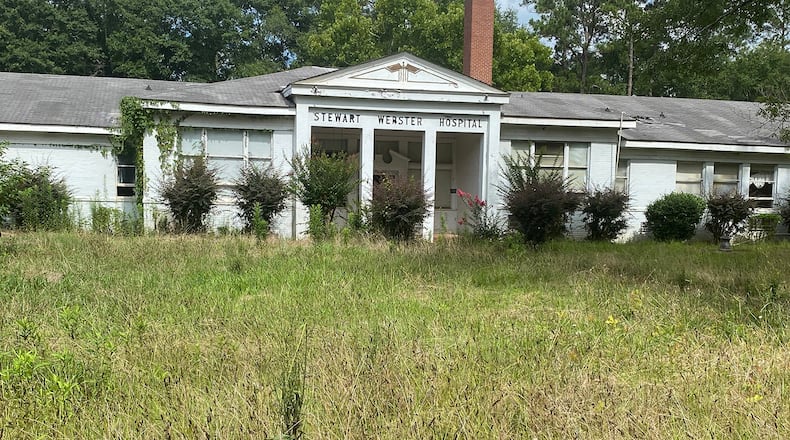In 2018, after I delivered a presentation on potential telehealth models, a physician in the audience challenged the feasibility of my ideas. Though she found the concepts intriguing, she thought they would face insurmountable challenges. Of course, neither she nor I knew that a pandemic was coming to make into dust legislative, financial and health policy obstacles and pave the way for an unprecedented surge in telehealth. Today, telehealth models are not only ubiquitous but also critical solutions for many health care systems.
Reflecting on that pre-pandemic discussion, I wonder: What other technological advances have we yet to entertain because we give the obstacles more space than the solutions we imagine? How radical can we allow ourselves to be? This question lies at the core of the evolving landscape of health care delivery and is fundamental to the realm of provider-to-provider telehealth.
Credit: handout
Credit: handout
Decades ago, Sanjeev Arora faced a dilemma. As a hepatitis C specialist at the University of New Mexico, he observed how distance delayed care for rural patients, often resulting in dire consequences. Because Arora was a person who thought about things, he thought long about this. What if he could collaborate with rural primary care providers to deliver care to their patients where they lived? This contemplation led to the inception of Project ECHO (Extension for Community Healthcare Outcomes) in 2003 — a collaborative model of medical education and care that employs provider-to-provider telehealth to reach underserved populations. What started in New Mexico has now grown into a global initiative, demonstrating the transformative potential of telehealth.
As technological advancements continue to reshape health care access and delivery, the prospect of radical transformation in health care is more tangible than ever. Provider-to-provider telehealth, which facilitates remote collaboration and consultation among health care professionals, is poised to revolutionize care delivery, enhance patient outcomes and improve overall health care system efficiency. At Emory University Department of Emergency Medicine, where I am based, our models of provider-to-provider telehealth has shown significant cost savings while maintaining quality outcomes when compared with in-person care. This means that a provider can now collaborate across multiple hospitals, transcending the limitations of being stationed at just one.
How radical can we be? We can establish tailored digital task forces to bring a wealth of expertise to bear on patients, diseases, disasters or crises. Models of these are already being born. Harvard professor Jarone Lee cofounded Health Tech Without Borders, a global nonprofit leveraging digital tools in disaster response. There is a growing trend toward incorporating digitized disaster response plans in many organizations’ pre-disaster planning efforts. For example, the Southern Regional Disaster Response System, led by Emory University’s Department of Emergency Medicine in collaboration with regional partners (University of Georgia’s Institute for Disaster Management, Wellstar MCG and the Georgia Department of Public Health) is engaging health systems throughout the Southeastern states to leverage existing telehealth infrastructure in response to a mass casualty incident.
We can revolutionize our tech platforms to enhance the collaborative experience. For example, the integration of cutting-edge technologies such as NVIDIA Omniverse into provider-to-provider telehealth creates a virtual meeting space that simulates a physical environment, enabling providers to interact with each other and medical data in a more immersive and intuitive manner. We can develop platforms that enable any country to overcome obstacles such as lack of medical infrastructure and crew.
Having grown up in Sierra Leone, I witnessed the power of enhanced communication. In the past, landlines were a luxury few could afford, and ease of communication was a privilege. With the advent of cellphones, Sierra Leone leapfrogged over infrastructural communication barriers, fundamentally changing how people communicated, banked, sought health care and lived.
According to the 2017 Georgia Board of Health Care workforce report, eight of Georgia’s 159 counties had no physician at all, 37 counties had no internal medicine physician, 63 counties had no pediatrician, 75 counties had no ob/gyn, and 84 counties had no psychiatrist. In a rural county in Georgia, in a village in Burkina Faso or in war-torn Ukraine, a health care provider can carry a doctor in his or her pocket. And who is to say that, in the future, that doctor in the pocket will be made of flesh, blood and bone?
Iyesatta Massaquoi Emeli is a distinguished physician and assistant professor at Emory University, where she is part of a working group asked with developing virtual acute unscheduled care models. She was 1 2021 Innovation and Discovery in the Emergent and Acute Science Scholar and is a National Foundation of Emergency Medicine Scholar. She serves on the executive committee of the American College of Emergency Physicians Telehealth Section.
About the Author
Keep Reading
The Latest
Featured




